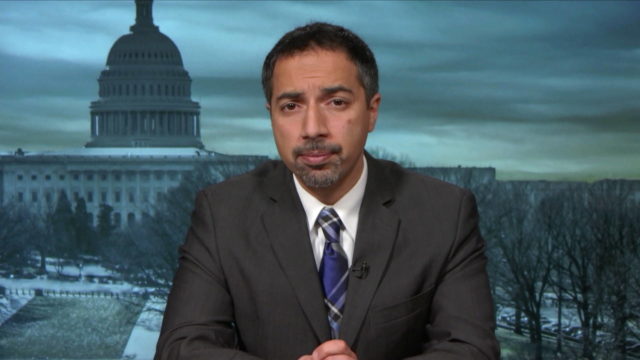Washington Post reporters cover, and the newspaper’s columnists and editors rail against President Donald Trump’s attacks on allegedly biased news media and their “fake news.” They sometimes assert that such presidential rhetoric threatens the free press as a pillar of the American republic.
In a talk at Indiana University last fall, Post media columnist Margaret Sullivan said the president’s assaults were “unnerving” and could undermine U.S. journalism as the epitome of press freedom globally.
But it was President Thomas Jefferson who complained, in an 1807 letter, that “nothing can now be believed which is seen in a newspaper. Truth itself becomes suspicious by being put into that polluted vehicle. … I will add, that the man who never looks into a newspaper is better informed than he who reads them; inasmuch as he who knows nothing is near to truth than he whose mind is filled with falsehoods & errors.”
Jefferson himself previously had backed The National Gazette as a vehicle to counter political opponents like Alexander Hamilton, so “reader beware” has a long pedigree as a guide for American news seekers. This returns us to The Washington Post and a recent example of what we’ve previously described as, if not “fake news,” then—due to omission, distortion and conflict of interest on the part of sources or writers—counter-factual, news fake-outs.
Though not a news report but rather a commentary or “analysis,” The Post’s “Five Myths: Iran” by Trita Parsi, president of the National Iranian American Council (Outlook, January 14) should never have passed editorial scrutiny. It was itself based on a myth: That Parsi and NIAC could illuminate misconceptions about Iran in the first place. To the contrary. The record of Parsi and his organization has been to create and enlarge them and in ways that assuage fears about the Islamic Republic.
Five days before Parsi’s Post-enabled pro-Tehran spin, Manda Zand Ervin, who fled Iran as a political refugee in 1980 and founded the Alliance of Iranian Women in this country, participated in a panel discussion on “A New Green Revolution in Iran?” at the Rayburn House Office Building. Among other things, she said NIAC seems to operate as a mouthpiece for the mullahs.
NIAC Exposed
So it does. Relying on open source material including court records, Sean Durns authored and I edited “The National Iran American Council: Tehran’s Best Friend in Washington,” a 2015 Special Report for the Committee for Accuracy in Middle East Reporting in America. It showed that NIAC has a history of whitewashing the regime’s actions, tarring its critics while expounding conspiracy theories or ahistorical narratives that soften Tehran’s image. Parsi repeatedly employed the last of the foregoing three techniques in “Five Myths.”
Copies of CAMERA’s Special Report were mailed to many in the news media; several copies went to The Post’s newsroom. E-mail links to the report online also were provided. Apparently to no avail.
In his “analysis,” Parsi contends that Americans’ knowledge about Iran has been “edged out by myths.” He ought to know; with The Post’s help, witting or otherwise, he purveys them.
For example, among Parsi’s five strawman myths is “Iranians hate Americans.” Not many Americans who’ve paid even cursory attention believe that. But they rightly suspect the regime-orchestrated rallies at which demonstrators chant “Death to America!” illustrate the theocratic government’s strategic aspiration.
Parsi allows that Iranian leaders’ “hostility toward the United States … is unmistakable.” So it is. However, his full sentence here reads, “But while the Iranian government’s hostility toward the United States (and vice versa [emphasis added]) is unmistakable, the Iranian populace tends to hold positive views about American people, culture and values.”
The “vice versa” is a lie, a false equivalence. The U.S. government is hostile toward Iran’s rulers, not the Iranian populace. But those rulers hate the United States, not merely the Trump administration. They have since leveraging the U.S. embassy hostage-taking at the start of the Islamic Republic in 1979 and 1980. Hundreds of American troops have been killed in Iraq and Afghanistan by Iranian-supplied weapons as the mullahs try to drive “the Great Satan” out of the larger Middle East. And it’s not for nothing that Washington considers Iran the leading state sponsor of terrorism.
Rouhani no ‘Moderate’
In any case, the Iranian public doesn’t make policy. Its views of America don’t count, any more than did those of ordinary Russians toward the United States at the height of the Cold War with the Soviet Union.
Parsi also peddles as “myth” the belief “Iran’s Green Movement was a failure.” He claims instead that the brutally suppressed mass protests over the 2009 presidential elections, widely believed stolen for President Mahmoud Ahmadinejad, “got some vengeance in 2013 through the election of Hassan Rouhani. Without the support of the Green voters, Rouhani—who lacked a clear political vase—could not have won the presidency.”
But Rouhani had a clear political base. He was a creature of the regime, a senior aide to founding Ayatollah Ruhollah Khomeini, former secretary of Iran’s national security council when it oversaw the murders of dissidents in exile, and like all other Iranian presidential candidates, allowed to run by senior clerics.
Rouhani wanted to reform his country’s theocratic police state the same way Deng Xiaoping’s followers “reformed” China’s one-party communist dictatorship—by making it more prosperous. Perhaps more sophisticated and pragmatic than Ahmadinejad, Rouhani no more than his predecessor sought to end Tehran’s Shi’ite imperialism.
Baldly, Parsi dismisses as another myth the belief “Iran’s enmity with Israel is ideological and immutable.” Instead, he attempts to “normalize” the conflict between Tehran and Jerusalem as part of a recurrent Middle East balance-of-power struggle. Yet as we have shown previously, the mullahs’ annihilationist anti-Zionism is central to regime ideology in the same way Jew-hatred framed the Third Reich’s worldview.
Fundamental Jew-Hatred
Matthias Kuntzel, author of Jihad and Jew-Hatred: Islamism, Nazism, and the Roots of 9/11, has pointed out that Rouhani has referred to Israel as “this festering tumor.” Supreme Leader (the German translation would sound a lot like der fuehrer) Khamenei terms the Jewish state a “cancerous tumor that should be cut and will be cut.” Khomeini, says Kuntzel, believed Israel to be “a festering sore and a cancerous tumor on the body of the Islamic countries” and an “enemy of all mankind.”
It’s not geo-politics. It’s the ideology—tolerance of Jews only as a small, inferior and submissive minority, not as equals with a sovereign nation-state—part of the regime’s raison d’etre.
Seeing Parsi’s prominently displayed sleight-of-hand, readers must reconsider The Post’s Trump-era slogan, “Democracy dies in darkness.” It’s also so that journalism perishes in opacity.


